4 Shazam! Stories for Newcomers: The Other Superman
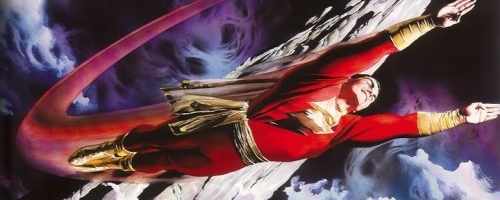
If I may venture into personal opinion here, I can’t help but feel that the recent Superman movie, Man of Steel, left me disappointed. To sum it up, the film’s story didn’t feel like a comic book story should feel, at least for me. The fundamental problem I had with it – and the fundamental reason the 1978 Superman is still one of my favourite superhero movies of all time – is that I felt that there was no sense of fun or wonder to the story I was watching, which I would argue are integral qualities to heroes like the Man of Steel. While some people were happy with Zack Snyder’s offering and the kind of story it told – and if you were one of those people, more power to you! – I did what any grumpy fart of a comic fan would, and turned instead to another of DC Comics’ old guard to take my mind off this increasing trend towards grimness and seriousness in the world of comics; Captain Marvel, better known under his comic series title (and, as of 2011, his current name) Shazam!
First, I’ll rattle off a little of the character’s publication history. Created by C.C. Beck and Bill Parker, and originally published in Whiz Comics #2 way back in 1940, Captain Marvel originally appeared as a sort of magical version of the then-National Comics’ caped hero, Superman. A young orphan, Billy Batson, was granted the ability to transform into a powerful superhero simply by saying the word “Shazam,” which would call down a bolt of Zeus’ lightning and grant him incredible powers – as well as an adult body, so as to look the part. For a while, the Captain’s popularity outstripped even that of his more well-known counterpart, a feat that is very difficult to believe today, and garnered a host of loyal fans across the globe who enjoyed his light-hearted magical adventures.
However, eventually National Comics took legal action due to the two characters’ similarities, and shut down their rivals, preventing Fawcett Publications, the owner of Whiz Comics, from ever publishing material related to their characters again. In the 1970’s, DC Comics – National’s new name – bought the licenses to the Fawcett characters, and began publishing Captain Marvel stories again; however, due to the fact that in the intervening period, Marvel had trademarked the title “Captain Marvel,” they were forced to title their new series “Shazam!”
Generally considered a throwback to Golden Age of comics, the Captain’s adventures were often bright and positive, and almost always vibrant. Crocodile men, a mind-controlling worm, a mad scientist who commits evil acts simply for the kicks and a magic train that brings people to the temple of an ancient wizard; while superficially quite silly and childish, these stories really bring to life the essence of what comic books are fundamentally about – fun. What child (or adult, for that matter) reading superhero stories hasn’t wanted at some point to turn into a superhero themselves, after all? The sunniness of many Shazam! stories may not be to everyone’s liking, but if you are curious as to what the Big Red Cheese has to offer, (and you’re aware of and okay with potential spoilers!) read on…
4. The Power of Shazam!
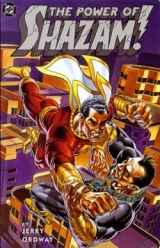 For those readers who’re completely unfamiliar with Captain Marvel, this next comic will be of great help – after all, it was to me! As an introduction to the character, Jerry Ordway’s graphic novel is a great choice, at least in my opinion; this was where my love of Shazam! started, and as a result it will always be a little bit more special than the other comics on this list in my eyes. Anyway, on with the show.
For those readers who’re completely unfamiliar with Captain Marvel, this next comic will be of great help – after all, it was to me! As an introduction to the character, Jerry Ordway’s graphic novel is a great choice, at least in my opinion; this was where my love of Shazam! started, and as a result it will always be a little bit more special than the other comics on this list in my eyes. Anyway, on with the show.
The Power of Shazam! is a classic secret origin story, and deals with both how Billy Batson came to be on the streets of Fawcett City (as DC renamed his hometown), and how he came to meet the Wizard Shazam and gain his powers. It also deals with how his infamous nemesis, Black Adam, gained – and regained – his powers, and how he returns to the world after nearly five thousand years of absence.
Compared to the darkness and drive for intensity in some of the comics of the time, The Power of Shazam! is remarkably retro; it is deliberately inspired by the Golden Age of comics, and Ordway’s writing and characterisation of Billy and company makes this influence very clear. That said, the storytelling doesn’t feel dated or old-fashioned, and there are still plenty of fairly mature themes to deal with; it is hard to call the murders of Billy’s parents anything other than shocking, even if it’s not as graphic as other works, and no amount of old school colour and wonder can hide the fact that Billy’s situation – at the start of the graphic novel, at least – is a pretty grim one. It also deals extremely well with the results of giving such incredible power to a small boy, and the reasons behind the Wizard’s choice; indeed, one of the greatest joys that Ordway’s work offers is the chance to watch Billy, initially unsure of his worth, grow into the hero his longtime fans always knew he was. The Power of Shazam! is the best basic introduction to the character, in my opinion, and where any prospective reader should start.
3. Shazam! The Monster Society of Evil
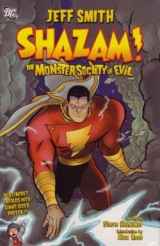 However, Jerry Ordway’s graphic novel isn’t the only origin story out there. In 2007, Jeff Smith’s take on the character was published, a story he had started in 2003 and had intended to be more of a for-all-ages story that could be enjoyed by any reader, regardless of age. In my opinion, Smith succeeds, and brilliantly, too!
However, Jerry Ordway’s graphic novel isn’t the only origin story out there. In 2007, Jeff Smith’s take on the character was published, a story he had started in 2003 and had intended to be more of a for-all-ages story that could be enjoyed by any reader, regardless of age. In my opinion, Smith succeeds, and brilliantly, too!
The Monster Society of Evil once again tells the story of how Billy Batson became Captain Marvel, but unlike The Power of Shazam!, it’s a bit meatier in terms of length and story development. Billy’s transformation into Captain Marvel is dealt with in the first third of the story, with the rest of it dealing with the repercussions of magic suddenly and violently being unleashed on the unsuspecting people of Fawcett City.
One of the more interesting aspects of Smith’s Shazam! is the theme of trustworthiness and government espionage that runs throughout. It’s not overt, but it’s there; Dr. Sivana, the mad scientist and arch-enemy of Captain Marvel, is the Attorney General of the United States, and it’s his duplicity and intent to use the magical beings now appearing in Fawcett as weapons that drives the story onwards – in the end, the scale of his evil is revealed, and it’s a magnificent reveal indeed.
Overall, the story is an absolute treat, and while Shazam! The Monster Society of Evil is certainly much more kid-friendly than most comics out there, it still serves as a solid introduction to the character and his main enemies, for those who are looking for a little more depth than Jerry Ordway offers.
2. Shazam! Power of Hope
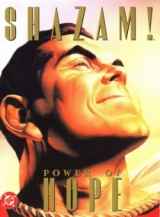 In many ways, I would argue that Power of Hope is one of the most emotionally moving stories ever told in a comic. Written by Paul Dini and art provided by the superb Alex Ross, this is a comic with a remarkably simple premise and plot; upon receiving letters from ill children at the local hospital, Billy Batson agrees to “convince” Captain Marvel to visit and brighten up the kids’ week. The Wizard Shazam agrees; it will do the children good, and the Captain is a strong symbol of hope for them. However, he warns Billy that when he goes there, he will find a child who needs their hope rekindled more than any other…
In many ways, I would argue that Power of Hope is one of the most emotionally moving stories ever told in a comic. Written by Paul Dini and art provided by the superb Alex Ross, this is a comic with a remarkably simple premise and plot; upon receiving letters from ill children at the local hospital, Billy Batson agrees to “convince” Captain Marvel to visit and brighten up the kids’ week. The Wizard Shazam agrees; it will do the children good, and the Captain is a strong symbol of hope for them. However, he warns Billy that when he goes there, he will find a child who needs their hope rekindled more than any other…
This story is not necessarily the perfect origin story for Captain Marvel, but I would argue
that it is the very best story to read if you want to get a grasp for what Captain Marvel is about. Everything is here; the colourful characters, the sense of brightness and fun and, of course, the superheroics. However, it also deals with some very serious subjects, and in a very mature and thought-provoking way. For all his power, after all, Captain Marvel cannot save everyone, as he discovers while comforting a girl whose condition is incurable.
Ultimately, the story really showcased just how potent a combination the creative team of Dini and Ross are, and what they can really do when they get their hands on a character they care about. Dini’s writing is superb, really showcasing Billy Batson’s strengths and personalities, but it is Alex Ross’ art that truly brings the comic to life. Everything looks real, to put it simply, and it brings a level of believability to even a boy who transforms into a superhero with the aid of a bolt of lightning. It’s been said many a time by many people that Ross is easily one of the greatest comic artists ever to work in the business – so much so that it’s probably a cliche – but it is certainly hard to argue otherwise when you view a picture of Captain Marvel hoisting a van over his head and it looks almost like a photograph.
This story is ideally best read after gaining a solid foothold on who the character is – for example, I wouldn’t recommend reading it until after you’ve read either The Power of Shazam! or The Monster Society of Evil – but it is well worth the wait!
1. Superman/Shazam: First Thunder
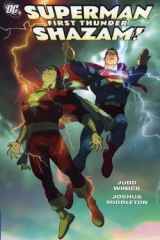 Perhaps the most “mature” of all of the comics on this list – at least, in the sense that it is the least inspired by the Golden Age and feels more like the other stories you’d get from DC – Superman/Shazam deals with the topic that DC likes to bring out every now and again in order to reference the publication history of the two characters; the first meeting between Superman and Captain Marvel, as written by Judd Winick.
Perhaps the most “mature” of all of the comics on this list – at least, in the sense that it is the least inspired by the Golden Age and feels more like the other stories you’d get from DC – Superman/Shazam deals with the topic that DC likes to bring out every now and again in order to reference the publication history of the two characters; the first meeting between Superman and Captain Marvel, as written by Judd Winick.
Honestly, there isn’t much in the way of significant plot development to this story, and as a contribution to the main storylines of the universe, it’s importance is negligible. However, what makes this a piece of vital reading for anyone looking to understand the way Captain Marvel functions within the DC Universe is that it shows the relationship between DC’s two most powerful men, how they develop with each other, and how one feels about the other’s existence. There are wonderful moments when the Captain – who is, after all, a ten year old boy in a man’s body – looks up to Superman with awe due to his range of powers, only to be met with admiration in return as the Man of Steel notes Captain Marvel’s proficiency with magic. It is also one of the few meetings between the two where Billy’s status as both a child and an adult in one is explored to any great extent; due to a tragedy in the latter stages of the story, Billy tearfully questions whether he should even be allowed to remain as Earth’s mightiest mortal due to his inability to stop the event in question occurring. Superman’s shock – at learning that his staunch ally is a child – is only matched by his concern and sympathy for the burden Billy has to bear as a superhero.
The writing is solid throughout, with the first half of the story being extremely fun, though fairly unexeptional otherwise. Fans will really want to dig into the second half, as this is where Superman/Shazam really becomes a valuable read.
Well, that’s my personal list of go-to stories for anyone looking to get a grasp on Captain Marvel. Unfortunately, getting your hands on any pre-New 52 Shazam! stories is very difficult these days; the last ongoing series published for the Big Red Cheese, The Power of Shazam!, was published in 1995, and ended publication in 1999. Since then, the last major story Billy Batson received was the controversial reboot, written by Geoff Johns as a backup story in the current Justice League title. Getting hold of those 90’s comics – as I have discovered to my regret – is a huge, difficult and expensive task, though if you can track down the issues, it’s well worth your time.
Otherwise, I hope my list helps the people who, since Young Justice and Superman/Shazam: The Return of Black Adam, have been looking for more to read, or even the people who simply saw the red and yellow costumed guy on the top of the first page and wondered what was going on. I’ve gotten a lot of enjoyment out of the Captain Marvel stories over the years, and if there’s anything great about being a comic book fan, it’s sharing those stories you liked best with everyone who’ll stand still long enough to listen to your ramblings… or read your article, as is the case here.
Happy reading, folks, and I hope you get as much joy out of these comic books as I did!
What do you think? Leave a comment.
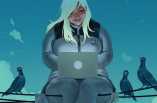
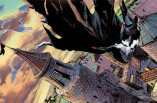
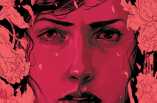
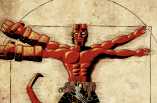

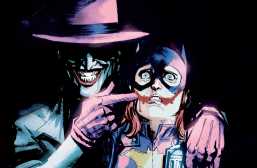
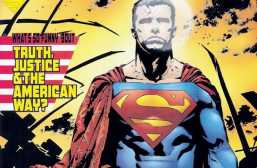
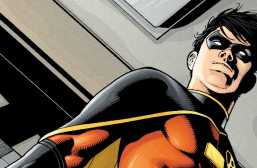
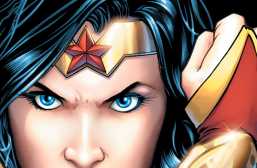
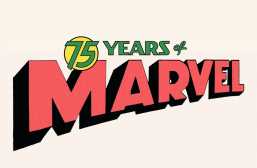
Shazam! is an interesting character, but I’ve always found the turmoil writers and companies have gone through with the character more intriguing than the character himself.
I also really didn’t like the Justice League back-up DC was doing for him. It was really not working for me. I don’t know that they’ll find a way to make the character work within the modern comic culture.
You and me both. The legal history behind the character is nothing short of fascinating, really.
I found the story Geoff Johns presented a little… lacking in magic, if I could use a cliché. It just seemed so serious and drained of any of the fun I recalled from the older stuff, I suppose.
The Paul Dini mega-books are excellent in the way that the art is amazing, and though the writing is pretty typical, it’s always a quality summary of the character the story is featuring.
Good to see our captain get some love. Shazam is the most mythological of the DC heroes- part man and part god, yet also partially a small boy. He is the essence of the best, most noble, and most purely innocent in heaven and on earth. Worthy of a 4 story spotlight 😉
You said it! For me, the big red cheese is pretty much why I loved superheroes when I was younger – and let’s be honest,the reason I still love them now!
I was never a Captain Marvel fan until I picked up Kingdom Come and was introduced to Billy Batson by Alex Ross.
Nice article dude. Judd Winnick did a great job capturing Marvel’s innocence and Superman’s grandiose stature. I need to revisit this book.
Monster Society of Evil was a vast improvement over some of the junk being kicked out by DC during that period. It’s not perfect but recommendable.
I admit that Power of Hope was not entirely what I expected. Great artwork and all that, but I was expecting more of a comicbook but found the story geared towards children.
It’s good to see Judd Winick writing Captain Marvel. This author clearly likes and understands him. The story is great.
First Thunder at the top? I liked the characterization. It was accurate and consistent with an ending that was touching. Great conversation between Shazam and Superman.
But but but… the dialogue was inconsistent, most of the time artificial yet lacking any affectionate quirkiness.
If it helps any, it’s not a ranked list. When I compiled it, I had no real order in mind, I just wanted to promote the stories I saw as good – not to mention affordable to get hold of. Hope that helps!
Nice list. I loved Power of Hope and Monster Society, but the rebooted version has mostly left me cold. I don’t hate it, but I see very little potential to build on.
I have always had a soft spot for the Big Red Cheese, and without him (or rather his sudden disappearance from comics), my favorite character Marvelman/Miracleman would not exist.
I know what you mean. To use the obvious pun, Johns’ reboot just didn’t capture the lightning the same way the others did, at least for me. Funny thing; I just re-read Moore’s Marvel/Miracleman run, I finished the last comic yesterday. I’d forgotten how good it was, and just how much it owes it’s existence to the Fawcett v. National Comics deal.
I am SO looking forward to the Marvel reprints and the completion of the story!
I cut my teeth on the Marvel Family reading Captain Marvel jr when I acquired some of the original comics in the 80s. Love that Mac Raboy art!
I have erad an assortment of Shazam to which the power of Shazam is the prologue to and they are pretty fun, considering they came out in the era I consider to be the worst for mainstream comics (mid 90’s).
I think if this is done correctly “The Power of Shazam” would transfer over to the big screen easily. Jerry Ordway is the man. While not a masterpiece, it’s a great book, and should be able to unite older fans of CM and new comic readers into a core of followers.
Captain Marvel is one of my all time favorite characters and this was a good tribute to the series.
I only discovered Captain Marvel a few years ago while playing Mortal Kombat vs DCU and preceded to read everything I could find on him. Unfortunately the only comics I managed to find are the Trials of Shazam! limited series (which deals with Freddie rather than Billy) and various crossover events but I’ve done a lot of reading of various wiki pages and he is deffo one of my favourite all-time superheroes. I will have to see if I can track down some of these stories in some format or another. I tried reading the new Shazam story in the New 52 and it just doesn’t seem right to me. To be honest there are a lot of decisions that I really disagree with in regards to the new 52 :/
This is really interesting. I like your writing style 🙂
I’ve never heard of Shazam until I read this article, and it struck me that the way Shazam! trasforms may have inspired Eren from Attack on Titan (an anime show)…. as this youtube clip shows: http://www.youtube.com/watch?v=dAhIwyM1dXU
It’s an interesting thought! Granted, while the Big Red Cheese may not be so popular now, he used to be a very well-known name in the world of comics – perhaps there’s a Shazam! fan on the AoT creative team, who knows?
Awesome, Awesome article. I absolutely love Captain Marvel, partially because he’s a much more obscure Supes. And yes, the Dini/Ross story was incredibly inspiring, my personal favorite story when compared to the Superman, Batman, and Wonder Woman story arcs.
“Comic books are fundamentally about – fun. ” I could not agree more. A great many superheroes were created when the US was suffering the effects of the Great Depression. I’ve always felt that pleasant escapism was the greatest of the gifts they offered. That’s not to say that comics can’t be serious or gritty, but it seems like we have an overabundance of that as of late. I was also dissappointed in the dark and grim Man of Steel. Shazam sounds like fun – I’ll give it a try.
It seems to me as I am reading about commentaries on American comic books that there was originally a sense of an escape from the real world (during the time of the Great Depression).